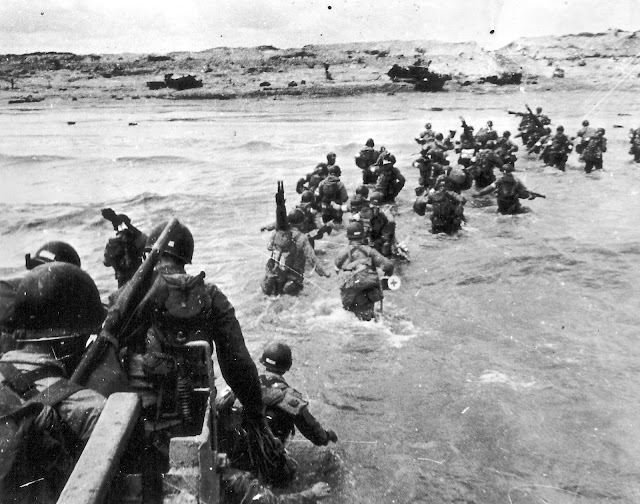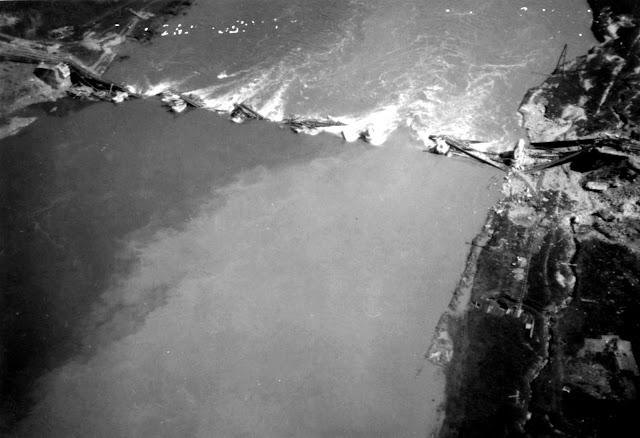MMLC William James Downey, WWII: Died on ship off West Coast
Officer William James Downey of 79 North Buckhout Street,
Irvington, is shown at Sleepy Hollow Cemetery. The headstone,
which was ordered by his widow Marjorie, says he was born
on Feb. 27, 1906. However his World War II registration document
written by him, stated he was born a year earlier, 1905.
Motor Machinist’s Mate Chief Petty Officer William James Downey, U.S. Naval Reserve, like many World War II veterans, had one or more brothers who also fought in a world war. But when Downey’s older brothers Daniel and Jeremiah fought in theirs, it was just known as The Great War.
It wouldn’t be called World War I until after World War II began in 1939.
William was the youngest over a spread of 19 years of the seven children born to Irish immigrant John P. Downey and Massachusetts-born Ellen “Nellie” (Kerrigan) Downey, the daughter of Irish immigrants. He came to Irvington as a toddler, having been born in his mother’s hometown of Newton, Mass., a Boston suburb and immigration hub in the latter half of the 19th century.
John P. was 10 years older than Nellie and had emigrated from British Ireland to the Boston area in 1884. The two would marry soon after and welcome son John J. in 1886. Daniel J. would follow in 1888, Jeremiah F. in 1892, David in 1893, Mary in 1896 and Katherine in 1899. William was born on Feb. 27, 1905, although the headstone on his grave at Sleepy Hollow Cemetery lists his birth year as 1906, apparently an error made on the application form for the stone by his widow, Marjorie, in late 1945.
The family came to Irvington between 1905 and 1910 to take advantage of work opportunities in the Gilded Age great estates of the village. And the Downeys did just that. They settled in an apartment in a three-family house at 22 North Astor Street, back then still named just “A” street. It was only steps away from the Lord & Burnham Co. greenhouse and boiler manufacturing plant at the corner of South Astor and Main streets.
The greenhouses were the playthings of the rich and famous and dad John P. Downey and sons John J., Daniel and Jeremiah all worked at Lord & Burnham. Fourth-born son David worked on one of the nearby estates as a gardener.
By 1920 the family was living in another multi-family apartment building, 17 Main Street on its northeast corner with Buckhout Street. By 1930, John Sr. had died and Nellie was living at 17 Main with Daniel, Jeremiah and William. Jeremiah and William were both working as chauffeurs for estate owners and Daniel drove for a trucking company. By 1940, William had moved to his brother John’s house at 79 South Buckhout Street in the young Spiro Park neighborhood. That single family home, which still stands, housed John, his wife Mary F., their five children — 3 girls and two boys ranging in age from 18 to 26.
John was very well known throughout the village via his job as the Irvington Volunteer Fire Department’s longtime paid driver — or chauffeur, as the post was called. William also served as a paid fire department chauffeur at the time, but left for Labrador in early 1942, not long after the attack on Pearl Harbor, to take part in an unnamed U.S. War Department project. William was one of 25 firefighters from Irvington to serve in the war, and the only one to give his life in service.
William Downey had married in about 1943 and was survived by his widow, Helen Marjorie (Coote) Downey, 34, who was living with her family in Syracuse at the time of his death. His widow, who went by Marjorie, had a six-month-old son with him, named David apparently in honor of William's older brother who predeceased him. William was also stepfather to Marjorie's 13-year-old daughter Helen Joan (Joan) Moore, from a 1929 marriage to a Joseph Francis Moore in Syracuse that had ended in divorce.
When William’s body was returned from California, it lay in repose at Vanderbilt Funeral Home in Tarrytown. A requiem Mass was held in the late chief petty officer's honor at his Irvington parish, Immaculate Conception, and burial followed with full military honors by Irvington Post 2911 Veterans of Foreign Wars and its auxiliary at Sleepy Hollow Cemetery a little more than a week after his death.
Links to similar personal stories about Irvington heroes who gave their lives for their country*
◼ Pfc. Cuthbert Powell Sinkking: Class of '42 gave 3 of its own to the ages
◼ Pfc. John Joseph (Joe) Gilchrist: Died after capture of Saint-Lo
◼ Lt. (j.g.) George Eddison Haines: Lost at sea, awarded Silver Star
◼ Pfc. Joseph Thomas Costello: Teen lost life in Battle of Mindanao
◼ MSgt. James Peter Kelley: Survived WW II and Korea; died in fall
◼ S1 Archibald Ronald: Lost on next-to-last Navy ship sunk by U-boat
◼ TSgt. Raffaele R. (Ralph) Reale: A hero's life ended on East Sunnyside Lane
◼ Sgt. Robert F. Morrison: Took fight to the enemy, fell in Alsace
◼ Lt. Col. George W. Beavers Jr.: Re-upped as private; died on war's eve
◼ F2 Claude L. Bronnes: Went down with the Atlanta at Guadalcanal
◼ MMLC William James Downey: Died aboard ship off West Coast
◼ Pvt. Alick Main Ian: Died taking Aachen, first German city to fall in WWII
◼ Pfc. George Mills Hill Jr.: Survived Okinawa, only to fall in South Korea
◼ Pvt. Peter R. Robinson: Lost to shadows of time over Pacific, answers never found
WORLD WAR I












Comments
Post a Comment